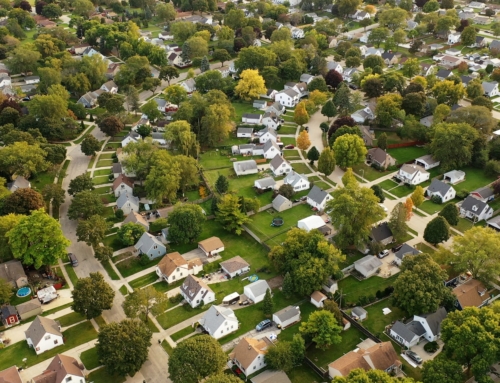The real estate outlook for 2013 continues to look muddled: While new home sales increased in 2012, the economy still struggles.
Each week, pundits step forward to proffer yet another prediction about where the housing market is going. Since 2006, when the housing market began its descent into madness, all we’ve heard that the residential real estate market has hit rock bottom, and the only way is up.
The trouble with housing market predictions is that there’s no way to know if they’re right or wrong until you’re well past the point. And that’s as true today as it was five or six years ago.
Last week, after housing industry observers were again proclaiming that the housing market had turned the corner, the government announced that the economy had actually contracted in the fourth quarter of 2012. It’s the first contraction since 2009, and it was a relatively small one: The economy contracted by one-tenth of one percent, small enough to be within the margin of error.
But why did the economy contract? The government pulled back on a great deal of spending, which it will have to do if we’re going to tackle the deficit.
(What generally escapes notice is that deficit reduction translates directly into someone losing their job, which is really tough in a fragile economy.)
If you look closely at the numbers, you see that there’s precious little to fall back on. Certainly, the housing industry isn’t pushing the economy much at all. And if not for the rebuilding going on after Superstorm Sandy, real estate might not register more than a tiny blip on the economy.
In fact, while the number of new homes sold last year increased around 15 percent over the prior year – which sounds like a lot – 2012 was the second-worst year for new home sales since these numbers have been recorded. About 350,000 new homes were sold compared with around 800,000 new homes in a normal market and over 1 million new homes during the house market boom.
Housing is one of those industries that employs a lot of people at a decent wage. Building a home is a very local task – you can’t really outsource it. You can outsource materials, by using wood from Canada or South America and nails from China. But the act of measuring, sawing, and nailing those boards into a shelter someone will call home is a very local industry.
The labor and materials are exactly why buying a new home is so expensive. According to the National Association of Home Builders (NAHB), the median price of a new home in December was about $248,000 compared with $180,000 for an existing home. That’s a $70,000 differential, which is even more substantial on a unit basis if you remember that about 25 percent of all homes sold today are distressed sales.
But back to the economy. If you want to buy a new house (or even an existing one), you need a job. And the economy is growing so slowly, it feels as though it’s moving backward – which is what happened in December. Sure, we had a hotly contested, divisive presidential election unfold, and as real estate agents who have been in the business know, presidential elections slow the purchase of real estate. It’s as if everyone wants to stop and watch and not make a decision until after the uncertainty settles.
But is it really settled? The first quarter has brought big snowstorms and little progress on the debt. The Republicans and Democrats continue to fight about every little thing, and hard to imagine Congress’ approval rating falling below 9 percent, already at, or near, historic lows.
For the housing market to have a chance, we still need buyers with good jobs that pay enough to cover a mortgage, property taxes, insurance and maintenance. And we need those jobs in place long enough for someone to count on being able to see enough of the future to make a long-term bet on housing.
Because that’s what real estate is about: A long-term investment horizon. Whether you’re living in it or buying it to fix up and rent out, real estate isn’t about fast moves, even if your local housing market conditions can change on a dime.







Leave A Comment